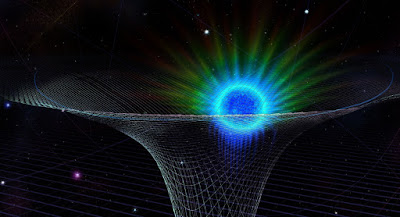Topics: Astrophysics, Black Holes, Cosmology, Einstein, General Relativity
A key aspect of Einstein’s general theory of relativity has passed its most rigorous test so far. An international team led by Tuan Do and Andrea Ghez at the University of California, Los Angeles confirmed the Einstein equivalence principle (EEP) by analyzing the redshift of light from the star S0-2 at its closest approach to Sagittarius A* – the supermassive black hole at the center of the Milky Way. The study combined over 20 years of existing spectroscopic and astrometric measurements of S0-2 with the team’s own observations.
Since Einstein first proposed his general theory of relativity in 1915, the idea has stood up to intense experimental scrutiny by explaining the behaviors of gravitational fields in the solar system, the dynamics of binary pulsars, and gravitational waves emitted by mergers of black holes.
In 2018, the GRAVITY collaboration carried out a particularly rigorous test – observing S0-2 at its closest approach to Sagittarius A* in its 16-year orbit.
As expected, the GRAVITY astronomers observed a characteristic relativistic redshift in light from S0-2. This redshift is a lengthening of the wavelength of the light and arises from both the motion of the star (the Doppler effect) and the EEP. The latter is a consequence of general relativity and predicts a redshift in light from a source that is in a gravitational field such as that of a supermassive black hole.
Einstein’s general theory of relativity tested by star orbiting a black hole
Sam Jarman, Physics World

Comments